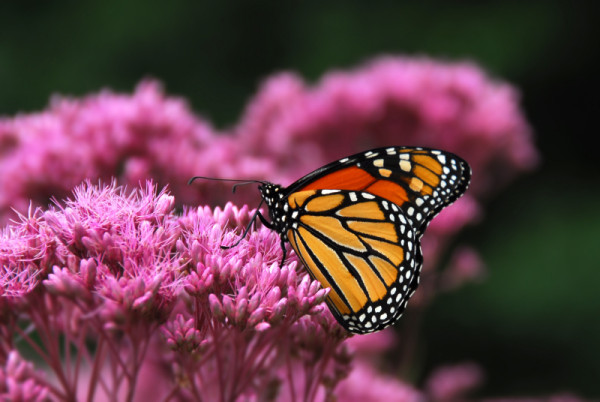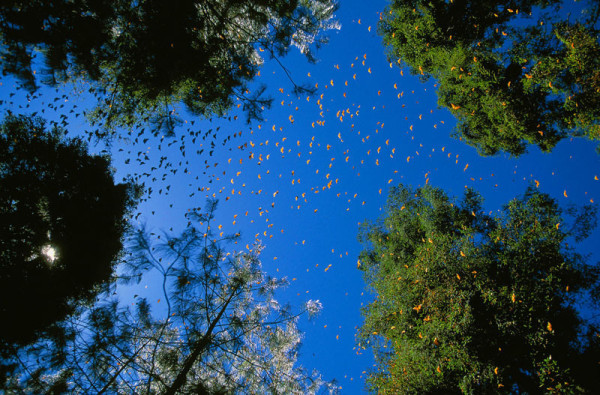North American Leaders Commit to Protecting Monarch Butterfly Migration
In February 2014, Canadian Prime Minister Stephen Harper, U.S. President Barack Obama, and Mexican President Enrique Peña Nieto committed their nations to taking steps to protect the monarch butterfly migration across North America.

Restoring monarch butterfly populations
Recent scientific evidence by WWF and Mexico’s National Commission on Natural Protected Areas document a steady decline of monarch butterflies in the hibernating sanctuaries in Mexico. In December 2013, scientists recorded the lowest levels on record, with monarchs covering a mere 0.67 hectares (1.65 acres) of forest cover — a 44% decrease from the previous year.
The joining together of the leaders of these nations is critical to the success of monarch butterfly conservation efforts across North America. It’s a big step that can help monarch populations rebound, so that their migrations can be appreciated for generations to come.
Protecting the monarch migration requires measures to ensure that each phase of their annual cycle of breeding, migrating, and hibernating continues. To meet this challenge, cooperative conservation efforts must be undertaken in all three countries to ensure that sufficient habitat is available on the monarchs’ hibernating grounds and sufficient breeding and migration habitat is available to maintain, and enhance North American monarch populations.
President Peña Nieto announced that all three leaders agreed to create a tri-national working group for the conservation of the monarch butterfly. “We have agreed to conserve the monarch butterfly as an emblematic species of North America which unites our three countries”, he said.
This declaration is a big step to save the monarch migration, but it’s only step one. Omar Vidal, Director General for WWF in Mexico said it best, “We must restore and protect habitat in all three countries, limit the use of herbicides in the U.S. and Canada, and halt habitat loss from both grassland conversion in the U.S. and deforestation in Mexico.”
WWF calls for specific actions for monarch conservation to include:
In Canada & the US
• Providing tools and guidelines to inform monarch conservation efforts
• Supporting provincial, state and federal agricultural conservation programs that protect and restore habitat for monarch butterfly foraging, breeding and migration
• Decreasing harmful effects of insecticides

End of March, all the Monarch butterflies in the Monarch Butterfly Reserve in central Mexico begin their migration to the USA and Canada. © Edward Parker / WWF-Canon
In Mexico
• Protecting the monarch reserve’s buffer zones from unsustainable forest exploitation, fires, grazing and agricultural expansion.
• Ensuring effective on-the-ground surveillance and law enforcement strategy to avoid logging in the core zone of the monarch reserve.
• Increasing coordinated actions as part of a long-term investment in sustainable economic alternatives.
What you can do to help monarchs
When you visit the monarch sanctuaries, you can help by following some simple rules of etiquette:
- Do not bother the butterflies resting in the trees.
- Keep at a distance of 50 metres from the trees filled with butterflies and do not make noise.
- Do not throw trash and avoid harming the forest plants.
- Stay on designated paths, to help prevent erosion and protect the forest floor.
- Report to a sanctuary guide if you see someone bothering the butterflies or destroying anything within the sanctuaries.
Join us for Monarch Butterfly Week, May 5-11, to learn more about this majestic species, what WWF is doing to help conserve its population and more ways you can support this critical work. Check out wwfcastg.wwf.ca as we reveal exciting details over the next several weeks.
